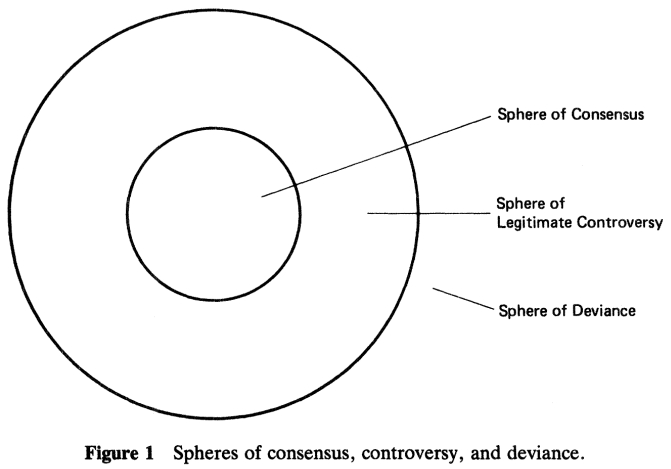Political reporter John Broder had a long piece in The New York Times yesterday chronicling Obama’s decision to delay a tighter national smog standard. I have no desire to relitigate that fight, but I do want to pluck out one particular bit of Broder’s piece to illustrate a point.
In a recent piece kvetching about media coverage of Solyndra, I said: “Republican talking points are delivered as first-order news. Liberal talking points are wrapped in meta-news about liberals and their talking points.” Let’s look at an example — not the biggest deal in the world, but quite illustrative.
Here’s the 11th paragraph of Broder’s piece:
The standard for ozone was last set in 2008 by the Bush administration at a level of 75 parts per billion, above the range of 60 to 70 recommended by the E.P.A.’s scientific advisory panel at the time, but never enacted. Environmental and public health groups challenged the Bush standard in court, saying it would endanger human health and had been tainted by political interference. Smog levels have declined sharply over the last 40 years, but each incremental improvement comes at a significant cost to business and government.
Look closely at those last two sentences. They contain four assertions:
- Bush’s ozone standard would harm public health.
- Bush’s ozone standard was subject to political interference.
- Smog levels have declined over the last 40 years.
- Each smog reduction imposes “significant costs” on “business.”
Now let’s re-order them based on how well they are supported by evidence.
- Smog levels have declined over the last 40 years. (This can be directly measured.)
- Bush’s ozone standard would harm public health. (This is based on the results of repeated, peer-reviewed scientific assessments.)
- Bush’s ozone standard was subject to political interference. (This was well-documented at the time and led to congressional investigation.)
- Each smog reduction imposes “significant cost to business.”
 That final claim is, depending on how its read, either trivially true or empirically false. It’s obviously true that smog rules impose costs on particular businesses (namely, the ones emitting ozone). But do the standards impose substantial costs on American business as a whole? Not according to the best evidence. EPA has done multi-year, peer-reviewed studies of the costs and benefits of the Clean Air Act. In the latest, implementation costs between 1990 and 2020 are assessed at around $65 billion. The direct benefits in public health will reach nearly $2 trillion. (That’s to say nothing of the myriad indirect benefits.)
That final claim is, depending on how its read, either trivially true or empirically false. It’s obviously true that smog rules impose costs on particular businesses (namely, the ones emitting ozone). But do the standards impose substantial costs on American business as a whole? Not according to the best evidence. EPA has done multi-year, peer-reviewed studies of the costs and benefits of the Clean Air Act. In the latest, implementation costs between 1990 and 2020 are assessed at around $65 billion. The direct benefits in public health will reach nearly $2 trillion. (That’s to say nothing of the myriad indirect benefits.)
When people get sick less, they die less. They miss school less. They miss work less. Health care costs are reduced. All those benefits are benefits for business. Ozone-emitting businesses have seen a modest rise in operating costs, but the U.S. business community overall has benefited enormously from a better educated, healthier, more productive U.S. work force.
(If you’re interested, EPA has also done a prospective analysis [PDF] of the ozone rule specifically; it shows net benefits outweigh net costs in more than half of the scenarios. It’s worth noting that both EPA and its critics in industry have a long history of overestimating how much these rules will cost.)
Now, with that ranking in mind, let’s take a closer look at how Broder presents his original four assertions. The first two, about Bush’s ozone standards, are things “environmental and public health groups” are “saying.” The third is stated simply (and appropriately) as fact.
And the fourth? It too is presented as fact: “each incremental improvement comes at a significant cost to business and government.” It’s not “some businesses,” it’s “business.” It’s not preceded by, “conservative and heavy industry groups say …” It’s not presented as the contested opinion of a particular set of special interests. It’s just a plain fact.
It helps to refer to a model I wrote about in this post:
 From The “Uncensored War”: The Media and Vietnam, by Daniel C. Hallin
From The “Uncensored War”: The Media and Vietnam, by Daniel C. Hallin
The sphere of consensus contains what “everyone knows,” assertions that do not have to be backed up or sourced. The sphere of legitimate controversy contains all those issues on which there are “sides” with differing perspectives, typically quoted in he-said she-said fashion. And the sphere of deviance contains all that nuttery that Serious People simply don’t discuss.
When press critics talk about media “bias,” reporters think immediately about the sphere of legitimate controversy. They think, well, we don’t take sides in those disputes, so we’re objective. What they often have trouble seeing is that what gets included in what sphere is itself an intrinsically political question.
When Broder states as fact that ozone rules are a net economic drain on business, he is engaged in a political act, though he probably doesn’t think of it that way. He is helping conservatives do something they’ve been trying to do for decades: drive the notion that government regulations are inherently economically harmful into the sphere of consensus, to make it something that everyone knows so no reporter has to support with evidence.
And when Broder presents the public health damage of smog as something “environmentalists say,” he is helping conservatives keep that fact — which is overwhelmingly supported by scientific evidence — out of the sphere of consensus.
The pattern has played out on a larger scale on climate change. The conservative campaign against climate science has never been about disproving it, it’s merely been about keeping it out of the sphere of consensus. That’s what “teach the controversy” is all about.
It also plays out around jobs. No D.C. reporter would think twice about stating that regulations cost jobs; they wouldn’t feel any need to back it up. Everybody knows it! Yet research shows that EPA clean-air rules are net job creators. That notion would strike most Beltway denizens as loopy leftism. It’s not even offered as a credible perspective; it lives in the sphere of deviance.
Or, finally, consider the notion that the U.S. deficit is a dire economic threat that requires immediate sacrifice. Among economists, that is a highly contested position, to say the least; most say the deficit is a mid- or long-term concern and that the short-term priority should be stimulating demand. Yet a coordinated conservative campaign over the past few years has driven deficit hysteria into the elite sphere of consensus, to the point that reporters have no compunction simply stating it as fact.
This, not overt ideology, opinions, or “taking sides,” is how Beltway reporters pass along their biases, which tend, through social osmosis, to reflect the biases of the wealthy people they spend most of their time around. “Objective” journalism contains all sorts of subtle heuristic clues about what serious people believe, what is in serious dispute, what is the province of fringe or special interest groups, and what (by its absence) is simply outré.



